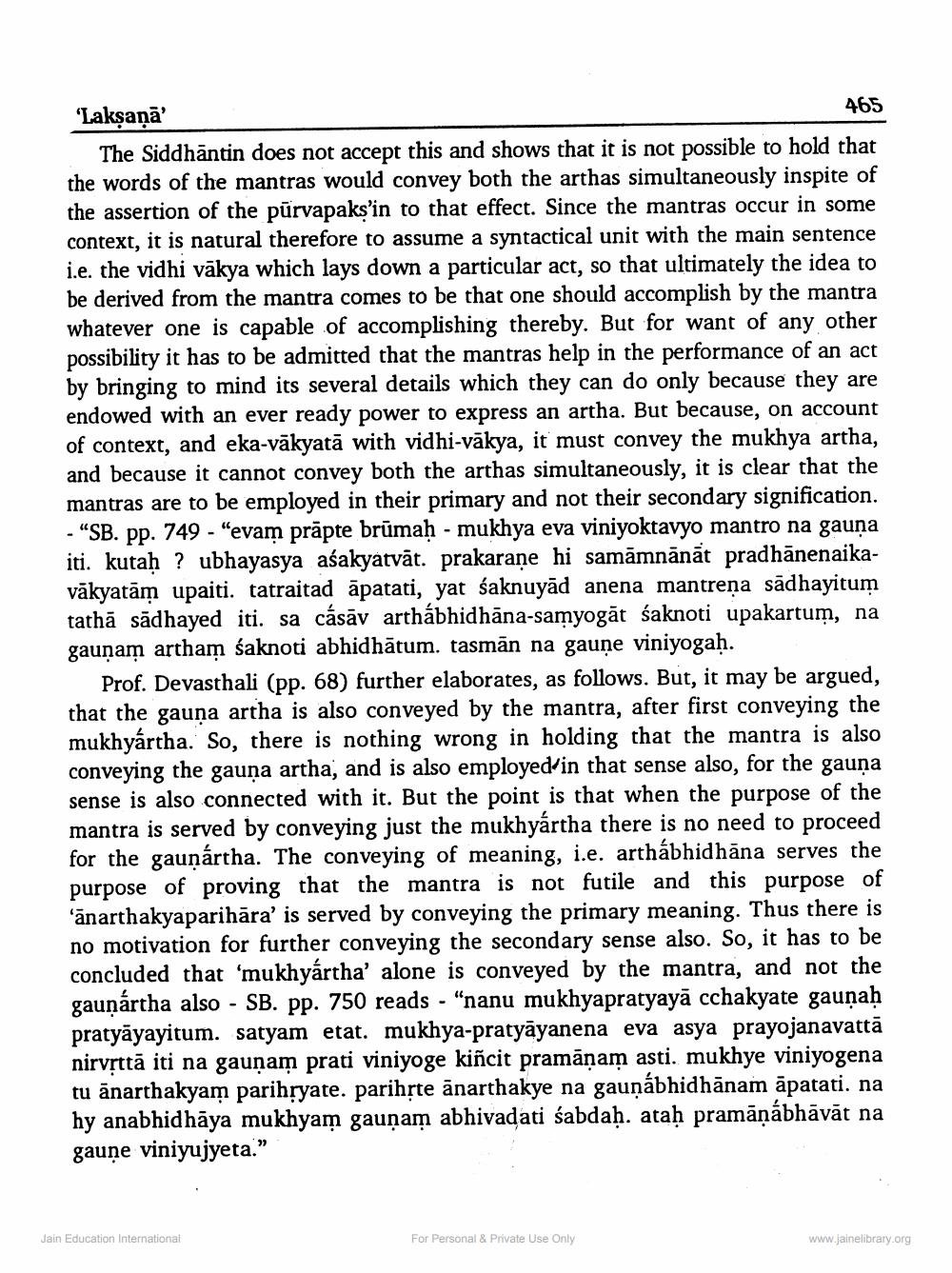________________
'Lakşaņā
465 The Siddhantin does not accept this and shows that it is not possible to hold that the words of the mantras would convey both the arthas simultaneously inspite of the assertion of the pūrvapaks'in to that effect. Since the mantras occur in some context, it is natural therefore to assume a syntactical unit with the main sentence i.e. the vidhi vākya which lays down a particular act, so that ultimately the idea to be derived from the mantra comes to be that one should accomplish by the mantra whatever one is capable of accomplishing thereby. But for want of any other possibility it has to be admitted that the mantras help in the performance of an act by bringing to mind its several details which they can do only because they are endowed with an ever ready power to express an artha. But because, on account of context, and eka-vākyatā with vidhi-vākya, it must convey the mukhya artha, and because it cannot convey both the arthas simultaneously, it is clear that the mantras are to be employed in their primary and not their secondary signification. - “SB. pp. 749 - "evam prāpte brūmaḥ - mukhya eva viniyoktavyo mantro na gauna iti. kutah ? ubhayasya asakyatvāt. prakarane hi samāmnānāt pradhānenaikavākyatām upaiti. tatraitad āpatati, yat saknuyād anena mantreņa sādhayitum tathā sādhayed iti. sa cásāv arthábhidhāna-samyogāt saknoti upakartum, na gauņam artham saknoti abhidhātum. tasmān na gauņe viniyogah.
Prof. Devasthali (pp. 68) further elaborates, as follows. But, it may be argued, that the gauņa artha is also conveyed by the mantra, after first conveying the mukhyartha. So, there is nothing wrong in holding that the mantra is also conveying the gauna artha, and is also employed in that sense also, for the gauna sense is also connected with it. But the point is that when the purpose of the mantra is served by conveying just the mukhyártha there is no need to proceed for the gauņártha. The conveying of meaning, i.e. arthábhidhāna serves the purpose of proving that the mantra is not futile and this purpose of 'anarthakyaparihāra' is served by conveying the primary meaning. Thus there is no motivation for further conveying the secondary sense also. So, it has to be concluded that 'mukhyártha' alone is conveyed by the mantra, and not the gauņártha also - SB. pp. 750 reads - "nanu mukhyapratyayā cchakyate gauņaḥ pratyāyayitum. satyam etat. mukhya-pratyāyanena eva asya prayojanavattā nirvșttā iti na gauņam prati viniyoge kiñcit pramāņam asti. mukhye viniyogena tu ānarthakyam parihryate. parihrte anarthakye na gaunábhidhānam āpatati, na hy anabhidhāya mukhyam gauņam abhivadati sabdaḥ. ataḥ pramāņábhāvāt na gauņe viniyujyeta.”
Jain Education International
For Personal & Private Use Only
www.jainelibrary.org




